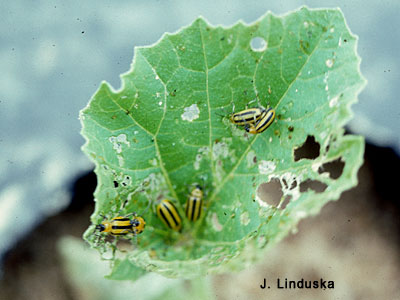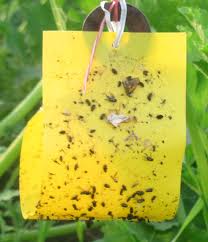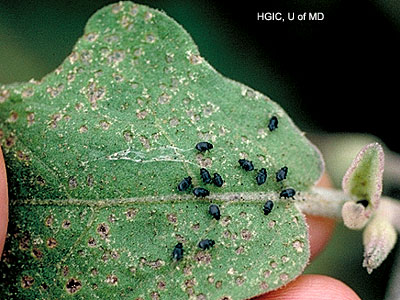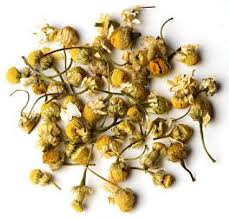Hello,
It turns out I did two #11 newsletters in a row. So we skip to #13… oops
A couple more notes on how to deal with pests and diseases, then harvesting your summer garden!
It is important to deal with any problems you may come across right away, since a small, easy to deal with problem can over take your garden before you know it.
You may be starting to see some powdery mildew on zucchini, summer squash, melon or cucumber leaves. The best way to deal with this is to remove any diseased leaves and spray the rest with a milk mixture. The strongest recommended is 40% milk to 60% water. Spray the tops and bottoms of leaves at the hottest, sunniest part of the day possible. Repeat every 10 days or so.
Powdery mildew
Cucumber beetles may be appearing in these same plants. Make sure to deal with as soon as possible since they breed very quickly. Trap and destroy as many as you can. Some people recommend taking a handheld vacuum cleaner into the garden! (Although this is not something I have tried) Sticky traps sold in hardware stores to protect your clothes against mites work well (also found on leevalley.com) Make sure to tuck traps in beside the affected plants so that they don’t trap other wildlife as well.
Cucumber beetle and sticky trap

Little black bugs on your tomato plants are tomato flea beetles. They shouldn’t damage the tomato too much, but it is best to control their population so they don’t become a more significant problem. You can easily defend against these little pests with a homemade insecticide spray. Alcohol and soap spray os made by combining 2 parts rubbing alcohol with five parts water and 1 tablespoon of dishwashing soap. Garlic and hot pepper spray works as well: about 6 cloves of garlic crushed and blended with a whole bunch of hot sauce, or crushed hot pepper and combined with 1L water. Let sit overnight, strain out the liquids and combine with a tablespoon of dishwashing soap and vegetable oil in a spray bottle.
Tomato flea beetle
If your zucchini don’t have any female flowers yet, don’t worry. The persistent rains, and hot hot heat have made the zucchini plants conserve their energy and the female flowers should pop any day now that the heat wave has subsided. Same goes for cucumbers. If you have lots of cucumber flowers, but no cucumbers yet, it is probably due to the difficult weather resulting lower than normal insect activity. Cucumbers should follow the nice weather pretty soon.
Harvesting:
Zucchini and summer squash should be harvested before they get too big. Around 4″ for patty pan and 6″ long for zucchini. Take a sharp knife into the garden and cut about 1′ down the stem. The more you harvest the more will grow
Beans: Pick early and often. Go into the garden with a bowl, and simply snap them off the plant with your fingers just above the stem. Early and often applies here too. The young and tender beans are the best. Make sure to check under the leaves, as beans like to hide from view.
Peppers: Won’t be ready for a while yet. Most sweet peppers will get to be more than 5″ long, and will turn yellow or red when they are ready. You can also pick them when they are still green if you prefer them this way. Cut the stem with a sharp knife.
Cucumber: Pick around 5″ or 6″. Taste and texture start to suffer when they get to big. Some varieties have spikes all over the cucumber, just rub them off with a soft cloth. Cut the stem with a sharp knife.
Eggplant: Is ready as soon as it gets to a size you are happy with. Squeeze gently, once it gets a softer texture and the skin has a nice shine to it. It’s best to pick the fruits when they are immature because the flavor is better and it stimulates the plant to continue producing. Cut the stem with a sharp knife.
Tomatoes: will turn colour when they are ready. Give them a gentle squeeze. If they are rock solid, they are not ripe yet. Slightly soft to the touch and they are ready to go. The trickiest one is the Green Zebra, if you look closely though, the stripes turn yellow when the tomato is ready. You should be able to pick them easily with a little twist.
Kale, chard and arugula: Continue to pick the larger outer leaves and let the inner leaves continue to grow.
The chamomile is done for the year. Remove the plant. Dry upside down and remove the flowers once they are fully dry for a heavenly loose leaf tea.
Dried chamomile flowers
Best,
Tereska Gesing